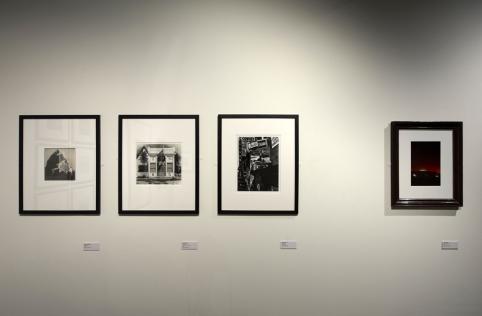Ever since 2003 when the Bernard Lamarche-Vadel collection was donated to the museum it has been the subject of study and educational experiments. The musée Nicéphore Niépce is constantly renewing its take on this collection through research and its museum-based and technological applications. (Corpus, BLV1, BLV2, BLV3, BLV4). With BLV1 we installed the collection at the heart of the museum for a first homage to the collector and the collection. BLV2 highlighted the unique relationship the collector had with death through the work of two artists he collected and who accompanied him until the end, Jean Rault and Jean-Philippe Reverdot.
BLV3 depicted the less well-known part of the collection, his collection of photography books (1300 photography books).
Corpus (2003-2006), reformulated in Arles for the 2010 Photography festival was a chance to renew this technological and museum-based experiment with the complete digitisation of the collections with nothing missing and no location constraints (1500 images).
Finally, BLV4 highlights the vision BLV himself had of his photography collection, its reach and its link to the history of photography and more generally the history of the arts (both literature and painting).
So we are delving yet again into the collection, this time in small stages, taking a few major historical pieces to lead us into conversations with the whole collection of contemporary pieces.
Any collection constituted by one person over a certain period of time shows up their determinations. The over-representation of an artist or the presence of a clashing element does not create a false note.
In Bernard Lamarche-Vadel’s collection, marked by contemporary photographers from the eighties and nineties, older photography takes up a much smaller place. However, as if he were compiling an encyclopaedia, he collected around the big historical categories: American landscapes; the portrait (the death portrait); documentary, commercial, fashion photography; pictorialist experiments; architecture; amateur photography, etc.
So around these few, impressive historical pieces from Watkins, Abbott, Evans, Stieglitz, Kühn, Umbo, Carjat, Man Ray, Nadar and Neurdein, there is a vast collection of contemporary work that we delved into to create an « ideal » selection.
Beyond differences of format, colour and framing, there is no gap between these chosen pieces or, if there is one, it is purely chronological. When we put them up, brought them together, we emphasised their links, with the idea of starting possible conversations.
So Carleton Watkins gets to talk to Hamish Fulton and Lewis Baltz; Umbo with Bettina Rheims and Keiichi Tahara; the pictorialist Heinrich Kühn with Paul-Armand Gette and John Coplans; Thomas Ruff with Etienne Carjat and Etienne Neurdein (19th century photographers); Berenice Abbott and Walker Evans with William Klein and Lewis Baltz; Félix Nadar with Florence Chevallier and Sophie Calle.
Only Alfred Stieglitz’s The Steerage
, stands alone when put beside the other pieces. It is a rare and an emblematic work in the history of photography. But conversations perhaps more in line with that history can take place: Coplans admired Watkins; Kühn worked with Stieglitz and Ruff’s German photography is linked to Umbo’s images from the thirties, etc.
Mentally, all conversations are possible, the hanging order can be mixed up and the traditional exhibition categories restored. It’s up to each spectator to make their own conversations.
Exhibition curator: Sonia Floriant
A catalogue has been published to accompany this exhibition :
Inclinations
La collection selon Bernard Lamarche-Vadel
Text:
Isabelle Tessier
,
Danielle Robert-Guedon
François Cheval, Sonia Floriant, Michèle Chomette, Gaëtane Lamarche-Vadel
Filigranes Editions
ISBN 13 : 978-2-35046-199-1
25 €








